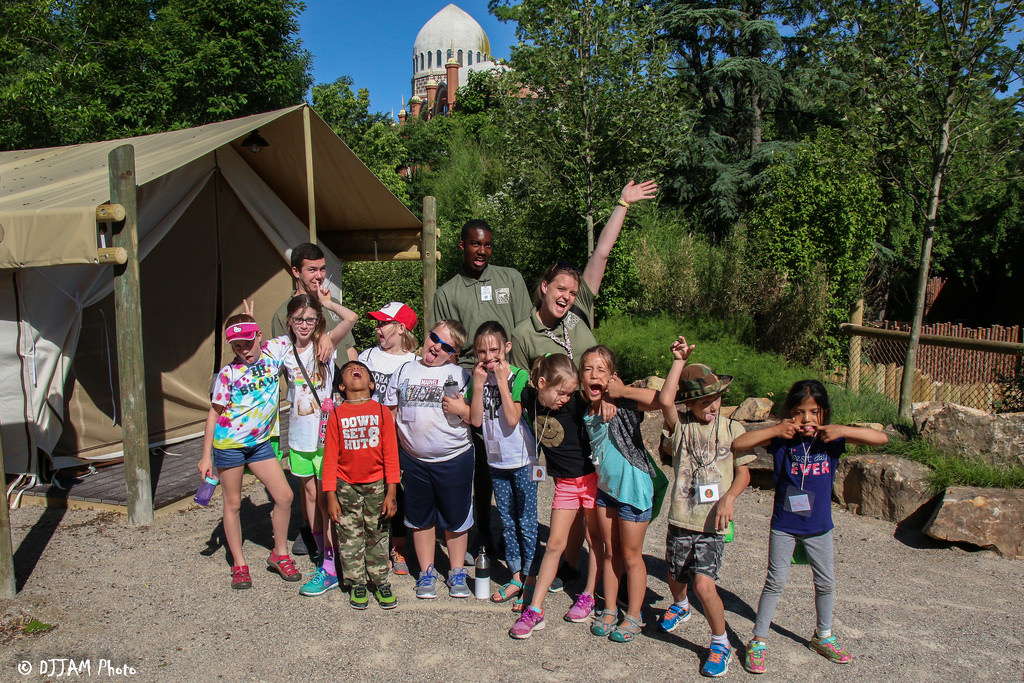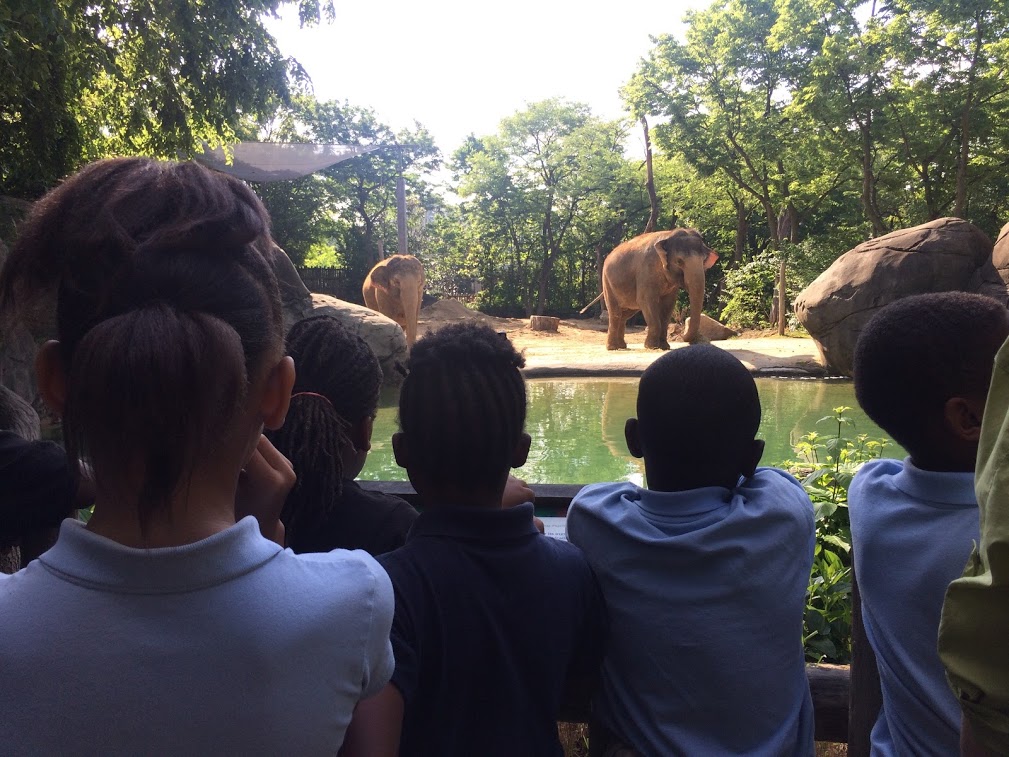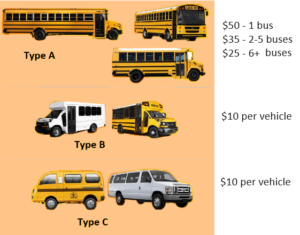Visit the Zoo with Your Group Today!
Enhance your students’ learning with a field trip where the Zoo is your living classroom! Field trips to the Zoo are available year round every day of the week.
Field Trips to the Zoo are a great way to observe animals and feel a connection to wildlife. Students will discover and learn at a world-class zoo that is actively engaged in conservation and sustainability, and filled with opportunities to get up-close and personal with wildlife. Field Trips are available year-round every day of the week.
Have you already booked your field trip and need more information?

General Field Trip Information
Dates: Sunday-Saturday, year-round.
Time: 10:00am-5:00pm; Early Entry 9:00am during spring/summer. See Zoo Today for hours of operation.
Cost: Students $8; Adults $8.
Note: We require 1 adult for every 7 students. Required adults are free. Required 1:1 student aides and bus drivers are always free.
Payment: Final numbers are not due until check-in the day you arrive. Once you check-in, payment is due (check, credit card, cash, or purchase order).
Parking: $10-$50 All vehicles parking at the Zoo must purchase a bus parking pass. Please see diagram for bus parking fee. Members driving separately may use Zoo membership for free car parking.
All Day Train & Carousel Rides: Students $4; Adults $4. Must be purchased by check-in to receive a discount.
School Lunches: Group lunches are available Monday-Friday, with a lunch pick-up times at 10:30, 11:00 or 11:30. Lunches must be booked at least two weeks in advance. School lunch details & request form
Lunch Options
- Whole Pizzas: $24 per pizza, 8 slices per pizza
- Options: Cheese, Pepperoni
- Max: 12 pizzas
- Hot Dog Lunch: $8
- Min: 10 Hot Dogs
- Max: 100 Hot Dogs
- Add Chips and a can of water: $6 per person
- Min: 10 Chips & Waters
- Max: 100 Chips & Waters
Payment
- Reservations must be made at least 2 weeks in advance. There is a 10-person lunch minimum.
- All school lunches are required to be paid for via credit card. We are not able to accept any other forms of payment such as checks or purchase orders.
- Once this form has been submitted, you will receive an email confirmation with a credit card authorization form attached. The credit card authorization form must be completed and sent back via email within 72 hours of receiving. If credit card authorization forms is not received within 72 hours, your lunch request will not be processed.
- Any changes or cancellations must be made at least 48 hours prior to your scheduled visit.
Close Encounters
No stuffy lectures here! The Adaptations Close Encounters programs focus on participatory learning through students’ observations of the behavioral and physical adaptations of two special animal ambassador visitors! These programs are designed to be fun and engaging while remaining developmentally appropriate and supporting Next Generation Science Standards.
Dates: Monday-Friday, October 1-May 19
Time: 10:45-11:15, 11:30-12:00, 1:00-1:30 (afternoon program March-May only)
Cost: $25 per program *Schools that register for a Close Encounter are committed to a $25 per program fee, unless cancelled 48hrs before arrival to the Zoo.
Audience: students PreK-8th grade. 8-35 students per program, depending on availability.
Sustainability Tours
The tour highlights the Zoo’s sustainability efforts in terms of green building design, energy efficiency, water conservation, stormwater management, solid waste management, and land stewardship. Go Green Challenges throughout the tour present tangible suggestions for how visitors can address the same issues at home.
Dates: Tuesday-Friday, October 1-November 30, Monday-Friday, February 1-May 19
Time: 10:30-11:15, 1:00-1:45
Cost: $0 per program
Audience: students 6th-12th grade. 8-20 students per program, max 10 chaperones per program.
CREW Tours
Through advanced animal and plant research, CREW is leading the way to secure a positive future for endangered species. During this 30-minute guided tour of the CREW building, students will have the opportunity to see scientists in the labs and gain a better understanding of the science taking place every day, right here at the Cincinnati Zoo & Botanical Garden.
Dates: Monday-Friday, year-round
Time: 10:30-11:00, 11:15-11:45, 12:00-12:30
Cost: $0 per program
Audience: students 7th grade-college. Max 15 participants per program.
Thanks to our sponsors and the Living Classroom Education Access Fund, qualified schools can apply for financial assistance for educational school programs.
The Living Classroom Education Access Fund supports underserved youth from the Greater Cincinnati Metropolitan Area receive free programs and field trips where they can experience the wonder of wildlife and wild places, many of whom have never had a Zoo experience.
School Resources
The Cincinnati Zoo & Botanical Garden is committed to supporting teachers, students, and families around the world. Below, you will find resources to engage learners in grades pre-K to 12 with science, the natural world, wildlife and conservation.
At the Zoo
Get your students involved in learning while at the Zoo! These standards-based, multi-curricular activities are meant to be a la cart so teachers can choose which topics and subjects they want their students to explore. See how these activities align our Ohio’s state standards and NGSS.
Expand for more
| Activity | Description | PreK-K | 1st-2nd | 3rd-4th | 5th-6th | 7th-8th | 9th-12th |
|---|---|---|---|---|---|---|---|
| Ani-Math | We can count and group animals that we see at the Zoo to help us practice our math skills. Become a math master with a little help from the Zoo animals. | X | |||||
| Animal Defense Skills | Animals inherit traits from their parents and ancestors that help them survive. | X | X | ||||
| Animal Inquiry (Guided) | We can make observations and create investigations about the animals at the Zoo. Students will practice the QUEST method of inquiry to answer a question about our Zoo animals. This activity guides students just learning the inquiry process from start to finish (includes specific habitats) | X | X | X | X | X | X |
| Animal Inquiry (Open) | We can make observations and create investigations about the animals at the Zoo. Students will practice the QUEST method of inquiry to answer a question about our Zoo animals. For those already familiar with the inquiry process (includes suggested locations) | X | X | X | X | ||
| Brilliant Bird Bodies | Bird body parts are different shapes, colors, and sizes, and they function in different ways to help birds find and eat food, fly, walk, and swim. Students will compare bird body parts and their functions, as well as how some human objects are inspired by birds. | X | |||||
| Crazy Legs | We explore how legs are used by animals and count legs on animals at the Zoo to help us practice our math skills. Become math masters by counting and comparing different zoo animal’s crazy legs. | X | |||||
| Critters and Climate | The changes in our climate impact many habitats and the living things there. The changes in our climate impact many habitats and the living things there. | X | X | ||||
| North American Natives | We share our continent with many diverse species which keep our ecosystems healthy, but non-native species and human activity may impact the health of ecosystems. Distinguish between native and non-native animals, and the roles of both in North American ecosystems. | X | X | ||||
| Pollinator-Palooza | Pollinators play an important role in the gardens at the Zoo. Students will make observations of pollinators in the gardens around the Zoo. | X | X | ||||
| Pollinator Party | Pollinators play an important role in the gardens at the Zoo. Students will make observations of pollinators in the gardens around the Zoo. | X | X | ||||
| Science of Survival I | Distinguish between native and non-native animals, and the roles of both in North American ecosystems. | X | X | ||||
| Science of Survival II | A habitat as well as traits inherited from previous generations influence the survival of species within those habitats. | X | X |
In the Classroom
There are thousands of wildlife and conservation organizations across the United and around the world that are doing amazing work to conserve wildlife and wild places and educate the public.
Expand for more
| Resource | Description | Adaptations | Citizen Science | Training |
||
|---|---|---|---|---|---|---|
| Explore.org - Polar Bear Cam | Live webcam feed from Tundra Buggy Lodge in Churchill, Manitoba | |||||
| Polar Bears International - Tundra Connections | Educator resource of webcasts from Polar Bears International | |||||
| Project WILD | Educators can get trained on delivering interdisciplinary conservation and environmental education through field investigations, career connections, outdoor components, and classroom activities. | |||||
| ODNR Environmental Education | Environmental education resources from projects, to grants, to workshops, to databases, to research guides, etc. | |||||
| World Wildlife Fund Resources | Lots of resources for teachers and students from lessons to crafts to videos, etc. | |||||
| Audubon - Kids Website | Kids/students can learn more about bird species, adaptations, vocabulary, play interactive and educational games, etc. | |||||
| Cornell Lab of Ornithology K-12 | Resources for educators to connect students to nature, participate in citizen science, and conduct their own studies | |||||
| ODNR Stewardship and Citizen Science | ODNR's environmental projects that anyone can help with as well as resources for conducting one's own research or environmental management | |||||
| iNaturalist | Easy-to-use website and app for identifying species and sharing findings with others in your area; data could be used in actual research | |||||
| Zooniverse.org | Full of various citizen science activities, such as helping identify species spotted on webcams around the world; data could be used in actual research | |||||
| Don't Feed Wildlife (USDA) | USDA's reasons why you shouldn't feed wildlife | |||||
| Don't Feed Wildlife (Western Michigan University) | Western Michigan University's reasons why you shouldn't feed wildlife | |||||
| National Wildlife Federation - Garden for Wildlife at Schools | Tips/steps from the NWF on creating a wildlife-friendly area on school property | |||||
| National Wildlife Federation - Garden for Wildlife at Home | Tips/steps from the NWF on creating a wildlife-friendly backyard | |||||
| OSU Backyard Enhancement for Wildlife | Tips from OSU on how to create a wildlife-friendly backyard | |||||
| USDA Wildlife Habitat | Tips from the USDA on how to create an area in your yard that is wildlife friendly | |||||
| Audubon - Activities and DIY | Kid-friendly, educational activities and crafts that help students learn about local birds and other wildlife and that can benefit said wildlife | |||||
| Crash Course Kids - Life Science: Ecosystems and Flow of Energy (YouTube) | Brief video lessons that highlight important aspects of ecology in kid-friendly terms | |||||
| Crash Course Videos - Ecology, Evolution & Genetics, Zoology (YouTube) | Better for older students; brief video lessons highlighting the most important aspects of the given topic (videos are on ALL subjects but I recommend the Ecology, Evolution & Genetics, and Zoology videos) | |||||
| SciShow Kids - Awesome Animals (YouTube) | Kid-friendly educational videos regarding many different species and their adaptations or behaviors | |||||
| Explore.org | Live webcams of all kinds of species all over the world. This website also organizes Katmai NP's Fat Bear Week. | |||||
| Cincinnati Parks - Backyard Bird Feeding | Naturalist shares tips for backyard bird feeding on their FB page | |||||
| Explorer Mindset | This resource, as well as the Explorer Mindset App, are inspired by the Learning Framework, created by National Geographic Education by educators, National Geographic staff, and child development experts. | |||||
| National Geographic - Online Courses for Educators | Professional development opportunities for formal and informal educators | |||||
| National Wildlife Federation - Lesson Plans and Webinars | Lesson plans and webinars by the NWF organized by topic and grade level, and align with the National Science Education Standards | |||||
| Cincinnati Zoo - Field Conservation Initiatives | Comprehensive list of all of the Zoo's field (in-situ) conservation initiatives | |||||
| Cincinnati Zoo's Build a Better Home For Wildlife campaign | Local/native species conservation initiatives and coexistence strategies for the public | |||||
| USDA Conservation Education Educator Toolbox | Resources for educators organized by grade bands to help bring conservation education to their classrooms | |||||
| USDA Conservation Education Student Corner | Resources for students to learn about forests and grasslands, how to get involved in citizen science, learn about forestry careers, etc. Fun activities can be downloaded as well. | |||||
| Cincinnati Zoo - Teacher Connections Crafts and Activities (Pinterest) | Pinterest boards containing different crafts, activities, and learning resources for teachers, organized by topic | |||||
| PBS Kids - Nature Games | Play games connected to different PBS Kids shows (such as Wild Kratts) to learn about nature, from animal adaptations to composting. | |||||
| National Zoo - Habitat Webcams | Live video feeds of some of the animals at Smithsonian's National Zoo in Washington, D.C. |

Stay in the Loop!
Call us at 513-559-7730 or email [email protected]
Sign up for our Quarterly Newsletter

